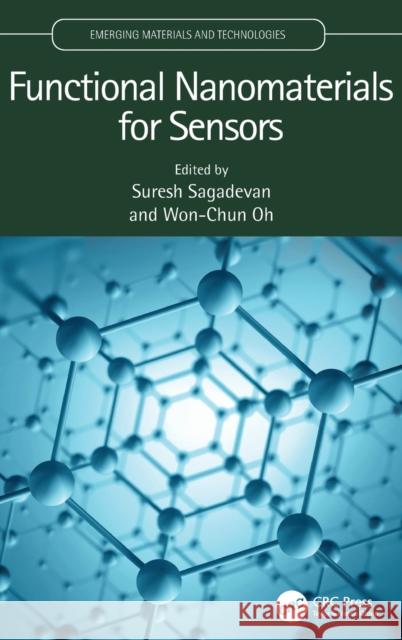Functional Nanomaterials for Sensors » książka
Functional Nanomaterials for Sensors
ISBN-13: 9781032204956 / Angielski / Twarda / 2023 / 352 str.
Functional Nanomaterials for Sensors
ISBN-13: 9781032204956 / Angielski / Twarda / 2023 / 352 str.
(netto: 627,14 VAT: 5%)
Najniższa cena z 30 dni: 629,67
ok. 22 dni roboczych
Dostawa w 2026 r.
Darmowa dostawa!
Because of their novel chemical and physical properties, functional nanomaterials have found increasing industrial applications in nanoelectronics, energy science, and biological applications. Functional Nanomaterials for Sensors surveys advances in functional nanomaterials and their use in sensing. It covers their properties, synthesis, design, fabrication, and their applications, including in chemical, biological, and gas sensing, environmental remediation, fuel cells, catalysis, electronic devices, and biotechnology. FEATURES: • Describes how nanomaterial functionalization is being used to create more effective sensors• Discusses various synthesis procedures, characterization techniques, and which nanomaterials should be used for sensing applications • Provides an in-depth look into oxide nanostructures, carbon nanostructures, and two-dimensional (2D) material fabrication • Explores the challenges of using nanoscale sensors for large-scale industrial applicationsThis book is aimed at materials, chemical, biotech, and electronics researchers and industry professionals working on sensor design and development.
Because of their novel chemical and physical properties, functional nanomaterials have found increasing industrial applications in nanoelectronics, energy science, and biological applications. Functional Nanomaterials for Sensors surveys advances in functional nanomaterials and their use in sensing. It covers their properties, synthesis, design, fabrication, and their applications, including in chemical, biological, and gas sensing, environmental remediation, fuel cells, catalysis, electronic devices, and biotechnology.
FEATURES:
• Describes how nanomaterial functionalization is being used to create more effective sensors
• Discusses various synthesis procedures, characterization techniques, and which nanomaterials should be used for sensing applications
• Provides an in-depth look into oxide nanostructures, carbon nanostructures, and two-dimensional (2D) material fabrication
• Explores the challenges of using nanoscale sensors for large-scale industrial applications
This book is aimed at materials, chemical, biotech, and electronics researchers and industry professionals working on sensor design and development.











